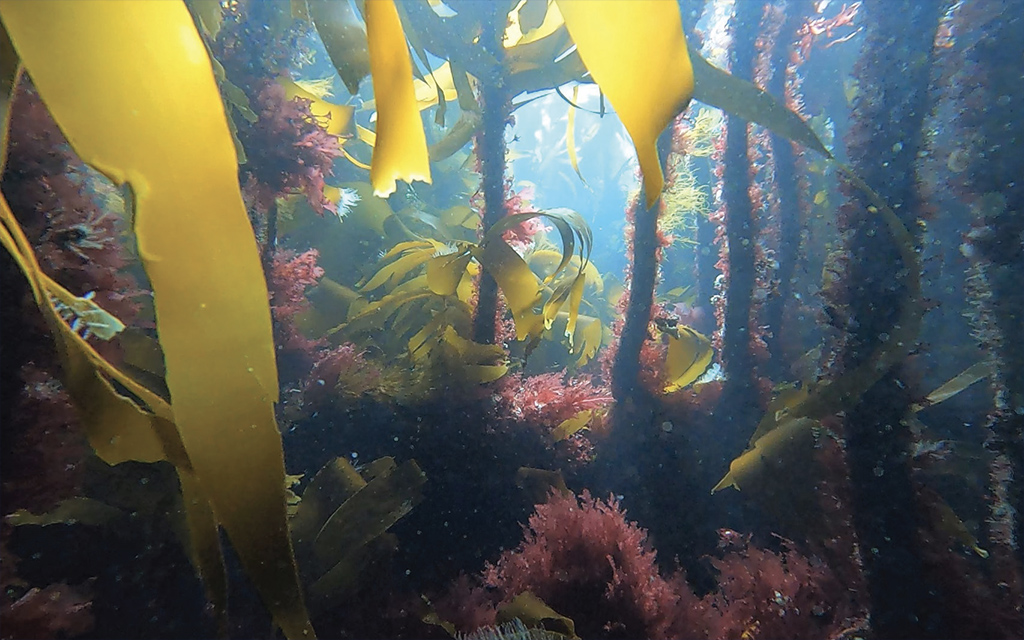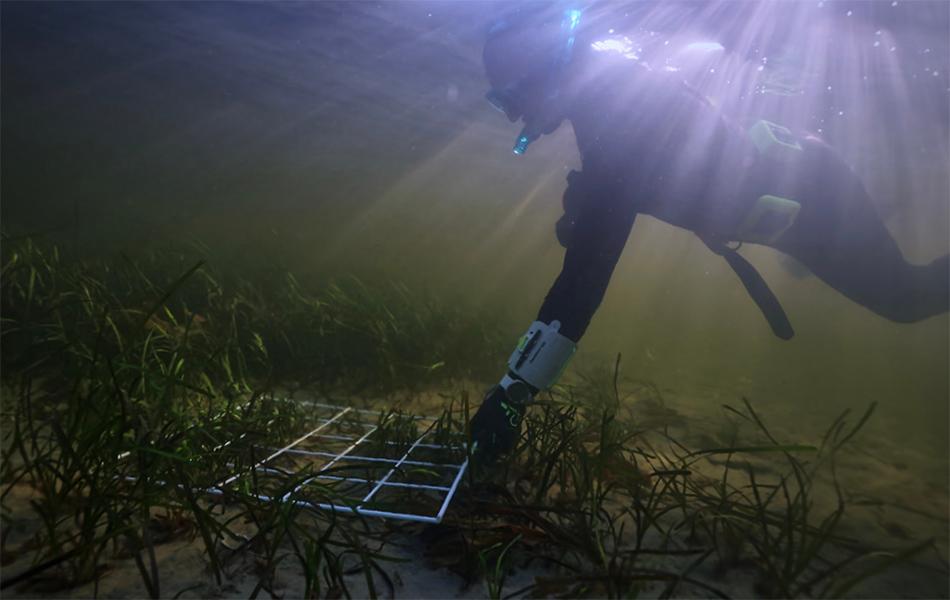
Kerry MacKay weighs up the practical and ecological implications of replacing plastic production with seaweed-based packaging.
As scuba divers, we are all very familiar with seaweed. Perhaps you’ve even cursed it as it wraps around your ankle, making finning a chore, or obscures a wreck from view. However, a new wave of seaweed-based innovation is promising to make a positive impact on our oceans.
We all know plastic is a problem. There are over 3,200 known toxic substances in plastic. More than 90% of plastic pollution is single-use items, and it is expected that by 2050, plastic in the ocean will outweigh fish!
The environmental benefits of seaweed-based packaging are numerous. First and foremost, seaweed is a natural and sustainable material (when managed properly). It grows rapidly in marine environments without needing fertilizers, pesticides, or fresh water. This makes it a more eco-friendly alternative to traditional plastic production, which relies heavily on fossil fuels and toxic chemical processes.
Seaweed-based packaging is biodegradable, meaning it breaks down naturally and harmlessly in the environment or your home compost. This significantly reduces the amount of waste reaching our oceans and landfills. Perhaps the dream of litter-free beaches and dive sites isn’t so impossible after all.
One of the most concerning issues with conventional plastics is the presence of toxic ‘forever chemicals’ (PFAS, see Jan/Feb SCUBA 2025). These chemicals are persistent in the environment and have been linked to various health and environmental problems. Seaweed-based coatings offer a far safer alternative for our health, as well as for the planet.
Seaweed-based packaging is biodegradable, meaning it breaks down naturally and harmlessly in the environment or your home compost
Another remarkable advantage of seaweed-based packaging products is their ability to save carbon. Seaweed is a powerful carbon sink, absorbing large amounts of carbon dioxide from the atmosphere during its growth. This process helps mitigate climate change and contributes to healthier marine ecosystems by reducing ocean acidification.
A good example of a seaweed-based packaging company is UK-based Notpla, which started 11 years ago in Rodrigo Gonzalez and Pierre Paslier’s kitchen. Notpla makes a range of products from seaweed, including food box coatings, gel pods, cutlery, sachets, and paper. In 2023, Notpla replaced 4.4 million units of single-use plastic, or 8.5 tonnes, and won the Earthshot prize!
Independent reviews show that Notpla’s seaweed-based packaging produces up to 70% less CO2e greenhouse gas (GHG) emissions than conventional plastic alternatives. Projections show that if we replace all single-use plastic with seaweed-based products, only 0.066% of the ocean would be needed, approximately the area of the land in the UK.
While seaweed farming can be a controversial topic, if done sensitively and managed properly, it could be a fantastic way to support rural communities and solve the global single-use plastic pollution problem. For making seaweed paper, one tonne of seaweed fibres saves four tonnes of trees from being felled. We know trees take longer to grow and are also a valuable habitat we should be looking after.
The Dutch government officially acknowledged the Notpla Coating as the first and only plastic-free material to meet the strict EU Single-Use Plastics Directive standards. This allows larger businesses such as Just Eat to use Notpla Coated Boxes across nine European countries, and Bidfood UK to introduce Notpla seaweed-coated boxes to more than 45,000 food businesses in the UK.
Members of BSAC come from all walks of life. Some of you probably work in the food and catering business, and we have all used single-use plastics. If you are in a position to influence your work’s procurement, see if you can encourage them to switch to plastic-free seaweed-based packaging. If you are a consumer, you can throw your purchasing weight around by asking businesses to use more sustainable packaging. Tell them about companies like Notpla.
Reusable packaging remains better than single use. However, seaweed-based packaging products make an ideal choice for unavoidable single-use packaging. Embrace these seaweed-based alternatives and protect the underwater world we love.
Article ‘Making waves with seaweed packaging’ by Kerry MacKay first published in SCUBA magazine, Issue 155 May 2025.

 Author: Kerry MacKay | Posted 28 May 2025
Author: Kerry MacKay | Posted 28 May 2025



